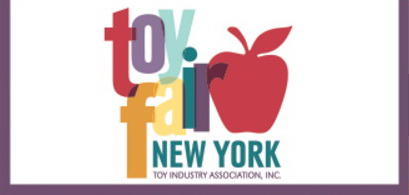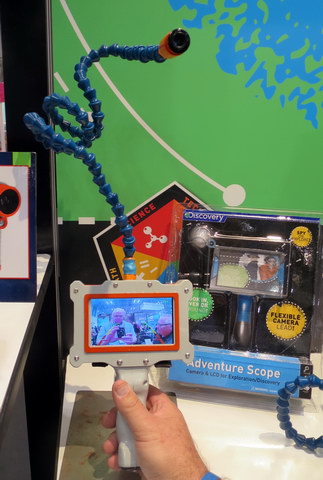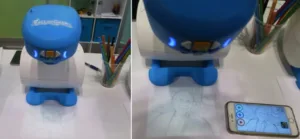This year’s New York Toy Fair, the 114th, was held February 18 – 21 at the Jacob Javits convention center in Manhattan. The focus of the Toy Fair is selling toys. Not at retail, but to the retailers and distributors who come to the fair to buy toys for the fall holiday selling season.


There were a total of 31,133 “play lovers” in attendance, plus 1,131 toy companies showing their products. According to the Toy Industry Association, there were “hundreds of thousands of ground-breaking toys and games.” Even the people running the show couldn’t count the toys. Most attendees came from the US and Canada, but an increasing number (up 10.9% from last year) from other countries, with China, the United Kingdom, Hong Kong Mexico and Japan leading the foreign contingent. Many of these were exhibitors, not toy buyers, however. Toy buyers, the heart and soul of the Toy Fair, represented 10,276 (up 2.4%) of the attendees. This included both mass and specialty buyers with delegations from 4,000 unique retail outlets and 22 of the top 25 toy sellers in the US. While many of the buyers represented on-line companies, buyer attendance from brick-and-mortar outlets grew 9.2%.
A large majority of toys at the Toy Fair were non-electronic toys. Many of the electronic toys did not include a display and many of the ones that did use a display were BYOD (Bring Your Own Display) and designed to work with smartphones or tablets.
One of many examples of BYOD toys at the Toy Fair was the VRSE systems from Skyrocket Toys. So far there are two VRSE systems, one Batman and the other Jurassic Park themed. For $60 at retail, the child gets a VR headset to be used with his smartphone, a themed controller and a game for either iOS or Android. These systems will start shipping in August.
 Batman and Jurassic Park Themed VR systems from Skyrocket Toys
Batman and Jurassic Park Themed VR systems from Skyrocket Toys
One new toy I saw was FollowGrams from Flycatcher, a tech toy company that was founded in 2013 in New York. FollowGrams is self-contained and has a built-in picoprojector although its use is enhanced when it is coupled with a smartphone. The goal of FollowGrams is to teach children to draw by projecting an image on a piece of paper and allowing the child to trace and color the image. The FollowGrams unit demonstrated at the Toy Fair had a built in memory card slot that had 50 images to draw. These were step-by-step. For example, a toy truck would show the wheels first, then the truck body then the driver and finally the background. The alphabet is also built in, allowing the child to learn how to draw letters and numbers.
FollowGrams projector at the Toy Fair. Left: projected line image of the FollowGrams rep. Right: Line image of Meko’s Matt Brennesholtz on the smartphone and projected on a white piece of paper by FollowGrams.
The FollowGrams projector would also talk to a smartphone via low-energy Bluetooth. In this mode, the child or his parent could take a photo, use the FollowGrams app to convert the image into a line drawing, upload the image to the FollowGrams projector and then trace and color the image on the paper. After the phone is disconnected, the image was stored on the projector’s memory card and could be used and re-used.
The FollowGrams projector uses a 160 x 128 full color projector, with lumen output and technology not stated. This resolution is non-standard but is roughly equivalent to qqVGA or QCIF. Even on the brightly-lit trade show floor with lights directly overhead, the FollowGrams image was bright enough to trace and color. FollowGrams is powered by 4 D cell batteries or an external power adaptor. While it is still on Kickstarter, it has exceeded its goal already, with 9 days to go. The rep at the Toy Fair said the unit would be shipping in September at a price of $49.99, with the power adaptor about $8.00 more.
Adventure Scope Reflects Privacy Concerns
The third display-related toy I want to write about was the Adventure Scope from Explore Scientific and will be sold under the Discovery Channel brand. The Adventure Scope is a remarkably simple unit, with a small video camera mounted on a 3’ (91cm) flexible shaft with the camera image shown on the built-in 2.44” (62mm) screen. This unit is deliberately designed to not work with a smartphone and has no built in memory, for privacy reasons. The rep at the Toy Fair said the company wants to prevent, as much as possible, the unit from invading anyone’s privacy and personal space. There are LEDs on the camera head both to illuminate the subject and, if the subject is a person, alert the subject that his or her privacy was being invaded. Since the unit will not record images or videos nor transfer them to a smartphone or tablet, if the user does invade someone’s privacy, at least he cannot share the images on the Internet. Uses suggested by the rep include poking the camera through a hole in a manhole cover to see what’s under the street or checking out dark attics, closets or crawlspaces. You can also play “Spy” with your friends.
 Prototype of the Adventure Scope at the Toy Fair. Meko’s Matt Brennesholtz can be seen on the screen.
Prototype of the Adventure Scope at the Toy Fair. Meko’s Matt Brennesholtz can be seen on the screen.
The unit at the Toy Fair was an oversized working prototype, according to the rep. The finished, actual size, working, prototype was currently in China at the OEM manufacturer. US retailer, Target, is said to be the first customer and will begin to receive shipments in April for fall distribution. The price had not announced yet.
There you have it, three display-centric electronic toys and three different approaches to displays:
- Must be used with a smartphone (BYOD)
- Toy works as a stand-alone but can be enhanced by a smartphone or tablet
- Cannot be used with a smartphone or tablet.
The first category was actually the most visible at the Toy Fair. Robots, drones and AR/VR systems were everywhere at the show. The main reason for the dominance of BYOD systems is cost. A 160 x 128 picoprojector or a low-resolution 2.44” LCD display are affordable for toy manufacturers and toy buyers. A high-resolution display is simply not affordable, especially in what is essentially a throw-away toy like the Jurassic Park VRSE system. –Matthew Brennesholtz

